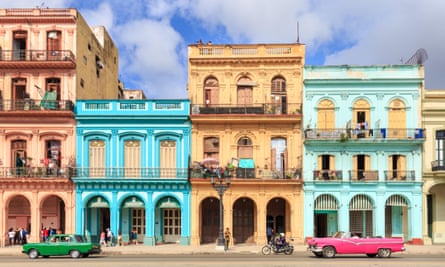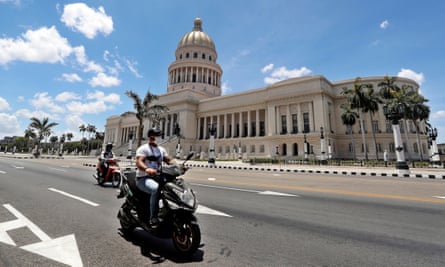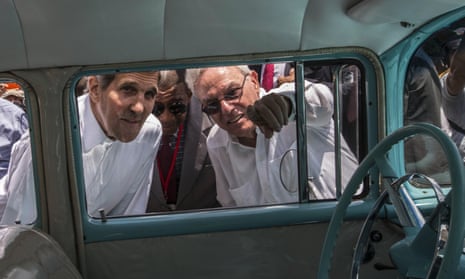Eusebio Leal Spengler, the Cuban historian who oversaw the transformation of Old Havana from a crumbling quarter into an immaculately restored colonial tourist attraction, has died at the age 77. He had been suffering from cancer.
Leal and his restoration efforts became so famous that he became the de-facto mayor of the historic city centre and one of the nation’s most prominent public intellectuals.
“To call it reconstruction of something that seemed dead and buried may draw dirty looks and dismissals that ours is a romantic crusade,” Leal wrote in a city bulletin in 2010. “But if that were the case, we wouldn’t feel embarrassed to be seen as romantics in times that are so apocalyptic.”
Born in Havana on 11 September 1942, Leal became city historian in 1967 and recognised that the resurrection of its historic district could be a moneymaker. That became especially important when communist Cuba embraced foreign tourism en masse after the disbanding of the Soviet Union. The loss of its billions of dollars in annual subsidies to the island brought the economy to the brink of total collapse.
After a series of nationwide economic reforms and the December 2014 declaration of detente with the US, Leal’s government-driven restoration of Old Havana gained momentum with the opening of hundreds of private businesses, from elegant restaurants to art galleries, that filled with tourists as visits to the country soared.
The boom raised worries about gentrification as expatriate Cubans or those with ties to foreign capital bought out longtime residents and turned their homes into businesses.

Leal’s office refurbished more than 300 buildings in Old Havana, the heart of a city founded in 1519 by the Spanish. He got all of Old Havana designated as a Unesco world heritage site in 1982.
That distinction brought international funding to revitalise the area, but Leal was also granted unprecedented autonomy by government superiors, allowing him to levy taxes in the neighbourhood and keep the profits his projects generated to reinvest in new rebuilding efforts.
Leal was a member of Cuba’s parliament, but enjoyed more power serving on the central committee of the Communist party. It was not uncommon for him to travel to the airport to greet arriving foreign heads of state, as well as oversee public political and cultural events.
By February 2008, Leal’s name was mentioned as a candidate for major promotion when Raúl Castro succeeded his brother Fidel as Cuba’s president – especially given the city historian’s generally moderate political views. Instead, Leal stayed at the helm of Old Havana.

Leal rebuilt tourist-friendly sites such as El Floridita, where Ernest Hemingway is said to have helped pioneer the daiquiri, and another famous watering hole, La Bodeguita del Medio. He oversaw restoration of some of the faded facade of the Malecón, the city’s famous seawall, and El Morro, the Spanish fort that guards the entrance to the Havana harbour.
One of his largest projects was the restoration of the domed Capitol building to become the seat of the Cuban parliament as it was before Cuba’s 1959 revolution.

But the on-the-surface charm of Leal’s efforts belied the problems of Cubans who live in grinding poverty mere blocks from tourist areas.
When the New York Times wrote a largely favourable 2007 article saying that Leal’s work had far more aesthetic benefits than real value for Old Havana residents, the visibly angry city historian organised a press conference to denounce the article, the reporter who wrote it and the newspaper.
“The question is, ‘Isn’t culture a positive? Isn’t the state of [Cuban] culture a positive?’,” Leal demanded to know.
